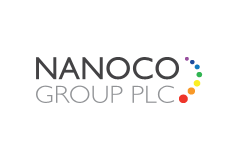The European Commission this week made public its decision to prohibit cadmium from TVs and displays sold in Europe from October 2019, as part of the Restriction of Hazardous Substances (RoHS) Directive. This is subject to ratification by the European Council and Parliament over the next two months. Cadmium in lighting products will be prohibited with immediate effect, although they are not commercially available.
Cadmium is one of six hazardous substances banned from use in Europe in electrical and electronic equipment by the RoHS Directive, which was designed to protect human and environmental health. The RoHS Directive recognizes cadmium as the most hazardous heavy metal; ten times more toxic than mercury or lead.
“This is a much-needed decision, which will provide market certainty as to the end date of cadmium use in TVs and displays, with immediate effect for lighting,” said Dr. Michael Edelman, CEO of Nanoco, a world leader in the development and manufacture of cadmium-free quantum dots and other materials. “The European Commission is putting the health of consumers first and removing deadly cadmium from these household products in an expedited timeframe.”
“Throughout the RoHS evaluation process, Nanoco and other leading companies have advocated against prolonging the use of cadmium – particularly given that safe and highly viable alternatives are already a success in the market and being quickly adopted by leading global manufacturers,” continued Dr. Edelman. “With this ruling, the end of cadmium is truly in sight. Responsible display manufacturers developing new products will need to start preparing now for ban in 2019.”
The Global Community Unites Against Cadmium’s Dangers
In addition to RoHS, other global standards also protect against cadmium’s dangers. The IEEE 1680 standard limits cadmium to <100 parts per million (ppm), stating further that good environmental practice is <50 ppm, with zero cadmium added deliberately. According to IEEE, “The standards provide clear and consistent performance criteria for the design of electronic products, providing an opportunity to secure market recognition for efforts to reduce the environmental impact of electronic products.”
“Cadmium-based technology has been a non-starter from the beginning,” said Dr. Edelman. “This is a failed technology that has been abandoned by leading international display manufacturers and rejected by consumers. Data shows that nearly 519 million Wide Color Gamut (WCG) displays were sold globally in 2016. Of that number, fewer than 400,000 products (or 0.08% of the market) containing cadmium were sold. Multiple cadmium-free technologies are widely available (including QLED, OLED, Advanced Phosphor, and Enhanced Color Filter) from market leading suppliers such as Samsung, Merck, Dow, and others for the fast growing WCG display market. This competition already ensures that market requirements for high color performance, energy efficiency, and cost are being effectively met. The cadmium-free future is bright and Nanoco is excited to be at the forefront of innovation in this industry.”

